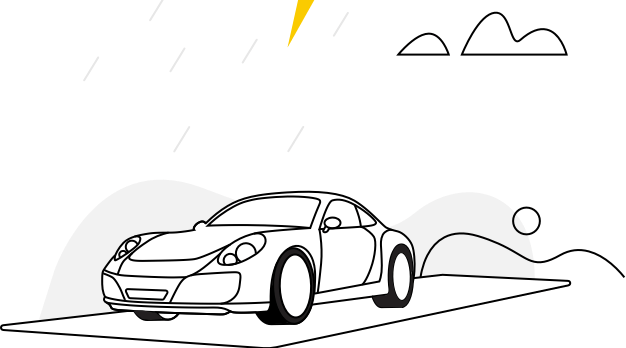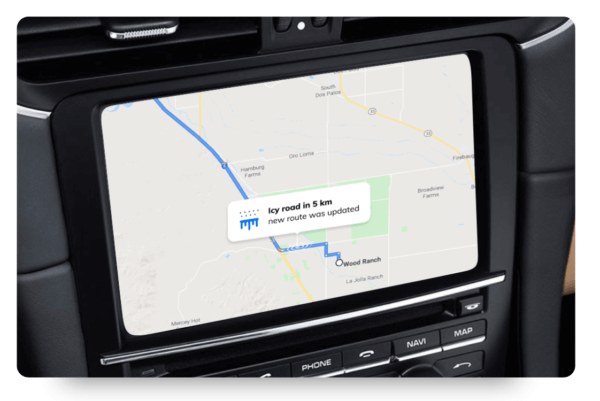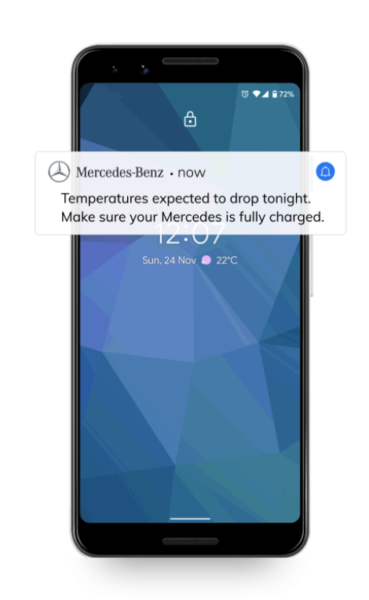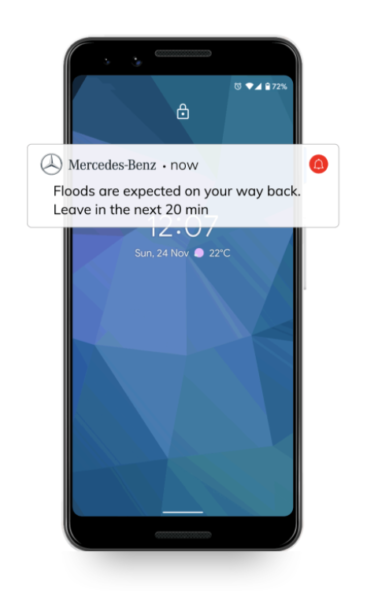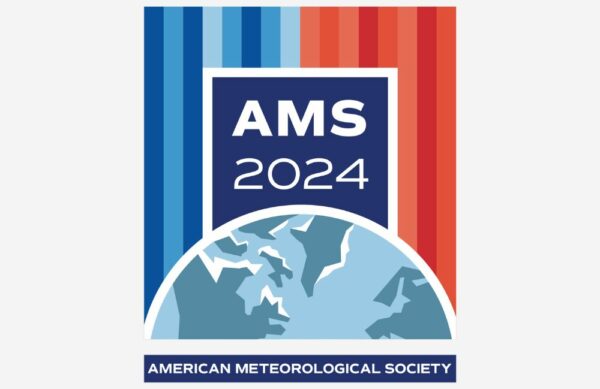Imagine one of your customers, Joe, driving his new car in the rain when the temperature drops and the road suddenly becomes icy and slippery — causing him to crash.
Joe becomes part of an unfortunate statistic: nearly 22% of car accidents in the US are the result of weather-related road conditions.
According to the Federal Highway Administration (FHWA), close to 6,000 people are killed and another 445,000 injured due to accidents that occur during bad weather each year. And traffic accidents in the U.S. cost a staggering $871 billion a year.
And while the auto industry has come a long way in the field of car safety, weather is still a major risk that cannot be controlled by the manufacturer.
This is exactly why better insights into the weather can save lives and offer a better experience to drivers. By incorporating weather data directly into a vehicle’s operating system, automotive companies can better serve drivers — keeping them safe, informed, and on the road.
Here’s why a weather API is a must for every technologically advanced car company today.
Safer Driving with Automotive Weather
While it’s easy to wake up and check the weather, it’s much harder to offer drivers reliable and actionable weather data at their fingertips. Your usual forecast may tell you if it’s going to rain, but it can’t tell you what to do with this information.
And while some cars today can already improve safety using weather data, it’s often extremely limited. Some specific car models, for example, offer:
- Rain-sensing wipers that turn on automatically in the rain
- Anti-lock brakes for slick or icy conditions
- Traction control for slippery roads
However, most vehicles on the road today can’t fully adapt to more complex weather conditions such as:
- Relative humidity and temperature which changes how tires interact with the road
- Wind speed which can slow vehicle speed and impact steering
- Fog which impacts visibility and requires fog lights
- Flooding which impacts the vehicle route
- Snow, ice, rain, or other storms which can impact road conditions
Drivers need to not only see that data, but also turn it into actionable insights that are integrated directly into your vehicle operating system.
For example, our old friend Joe doesn’t really care about the weather parameters. He just needs to know that he should slow down to 30mph because the road is about to get icy. And he needs his car to send him an alert to slow down — at the exact right moment to prevent an accident.
Automotive companies can improve the driver experience by:
- Giving drivers access to reliable weather data that is minute-by-minute on the street level.
- Turning that data into actionable insights such as: slow down, take a different route, or watch out for ice.
- Integrating these alerts directly into your vehicle operating system, allowing your cars to offer proactive guidance to drivers and prevent accidents before they happen.
Advantages for Electric and Autonomous Vehicles
The benefits of detailed weather data for drivers of all vehicles are huge, but the advantages are even more impressive for electric and autonomous vehicles.
For autonomous vehicles, there are a number of additional risks posed by weather, including:
- Radar Functionality: MMW radar can be reduced by 55% during severe precipitation
- Eco Impact: 20% reduction in energy consumption with optimized algorithms
- Vehicle Range: Avoid 17% range decreases in warm weather conditions and 41% range decreases in cold weather conditions
That last point about vehicle range is huge for electric and autonomous vehicles. For drivers or operators of these vehicles, so-called range anxiety is a massive pain point for drivers and can even dissuade some from purchasing an electric vehicle. If you can provide more peace of mind for drivers using weather data, it is a huge advantage in the market.
Drive Brand Loyalty in Automotive
While safety is always paramount, brand identity and loyalty matters too. And when it comes to the driver experience, weather can be a huge differentiator for your brand.
Weather can offer a personalized and unique experience for drivers both in and out of the car.
If your car’s operating system integrated data from a weather API, it can offer a safer and more enjoyable ride for the buyer. But you can also use that same data for a complementary app that will send alerts at the right moment to your drivers, for example.
If Joe parked his car at the mountain and is enjoying a full day of skiing, his car app could alert him that the snow is accumulating rapidly and he should leave in the next hour to avoid dangerous driving conditions.
This type of driver experience is a massive leap forward for car brands, and will keep your drivers hooked no only on the car, but also on your app.
The Right Weather API for Automotive
While there are many weather data providers on the market, not all can offer the in-depth and actionable insights you need to improve safety, road safety, and drive loyalty for your automotive brand. Learn why Tomorrow.io is the weather API top brands choose.
